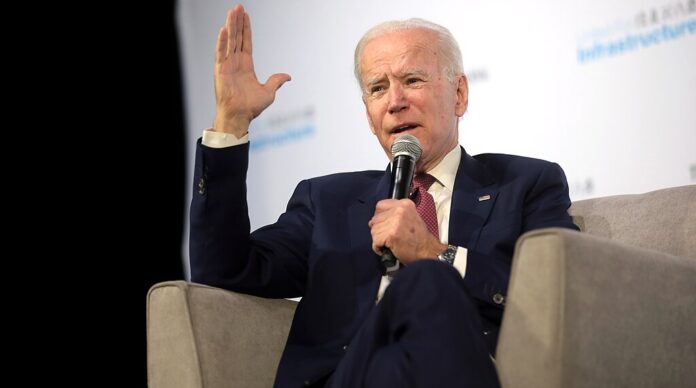As new talks are set to begin following the killing of Hamas leader Ismail Haniyeh, President Biden’s three-phase plan to end the Gaza conflict faces critical scrutiny and mixed reactions from key stakeholders
In late May, President Joe Biden unveiled a comprehensive three-phase plan aimed at ending the ongoing war in Gaza. The proposal, characterized by Biden as an Israeli initiative, has been the subject of intense negotiations even as the conflict continued unabated.
The plan’s first phase calls for a full and complete ceasefire lasting six weeks. During this period, Israeli forces are expected to withdraw from all populated areas in Gaza, while Hamas would release a number of hostages, including U.S. citizens, and return the remains of any deceased hostages. In exchange, hundreds of Palestinian prisoners would be released. The ceasefire would also allow Palestinian civilians to return to their homes and neighborhoods, many of which have been devastated by the conflict. Humanitarian aid would be significantly increased, with up to 600 trucks per day entering Gaza, and international efforts would focus on providing temporary shelters and housing units.
Embed from Getty ImagesFollowing the initial six weeks, phase two of the plan would see a complete Israeli withdrawal from Gaza. Hamas would be required to release all remaining living hostages, including male Israeli soldiers—a critical and contentious point in previous negotiations. Successful adherence to this phase would lead to a permanent cessation of hostilities.
Phase three involves a major reconstruction and stabilization effort for Gaza, supported by the U.S. and the international community. This phase, expected to last between three and five years, aims to rebuild Gaza while ensuring that Hamas does not rearm. Any remaining deceased hostages would also be returned during this phase.
Biden has stressed that if Hamas fails to meet its commitments, Israel reserves the right to resume military operations. While Israeli Prime Minister Benjamin Netanyahu has argued that military pressure is essential for securing hostages’ release, Biden has highlighted the roles of Egypt and Qatar in ensuring compliance from both parties.
The plan faces considerable challenges, particularly in light of recent developments. Just days before new talks were set to begin, Israel executed a deadly strike on a Gaza school housing displaced individuals, resulting in at least 93 deaths according to Palestinian rescuers. This attack occurred less than two weeks after the assassination of Hamas’s political leader, Ismail Haniyeh, in Tehran, a move widely attributed to Israel.
Hamas has condemned any further talks, viewing them as a tactic to prolong the conflict and enable Israeli occupation. In response, Qatar’s Prime Minister Sheikh Mohammed bin Abdulrahman Al-Thani criticized Israel for undermining the peace process through targeted assassinations and civilian casualties, questioning the viability of mediation efforts.
Analysis:
Political: Biden’s three-phase plan is a strategic attempt to de-escalate the Gaza conflict through a structured process. The plan reflects a significant U.S. diplomatic effort to balance pressure on both Israel and Hamas while facilitating a path to peace. The mixed responses from key stakeholders—ranging from cautious support to outright rejection—underscore the deep-seated political complexities and rivalries. The involvement of Egypt and Qatar as mediators adds another layer of geopolitical manoeuvring, potentially influencing regional dynamics and U.S. relations in the Middle East.
Social: The plan’s emphasis on humanitarian aid and the return of civilians to their homes addresses immediate social needs in Gaza, which has been ravaged by conflict. The prospect of large-scale reconstruction efforts could offer hope for long-term stability. However, the continued violence and high civilian toll complicate perceptions of the plan’s effectiveness and fairness. The social impact of the conflict and the proposed solutions will likely influence public opinion and societal attitudes towards both the U.S. and regional actors involved.
Racial: While the plan does not explicitly address racial issues, the conflict has racial and ethnic dimensions, given the historical and ongoing tensions between Israelis and Palestinians. The international community’s response to the plan and the broader conflict often reflects underlying racial and ethnic biases, impacting how different parties perceive and engage with the proposed solutions.
Gender: Gender dynamics are indirectly affected by the plan. The conflict has disproportionately impacted women and children in Gaza, and the proposed humanitarian aid and reconstruction efforts could provide critical support for these vulnerable groups. The inclusion of women and children in hostage release negotiations highlights the gendered aspects of conflict resolution and humanitarian priorities.
Economic: The reconstruction phase of the plan is expected to have significant economic implications. The proposed investment in Gaza’s rebuilding could stimulate economic recovery and development, contingent on successful implementation and stability. However, ongoing conflict and political instability pose risks to economic progress, potentially affecting both local economies and international investments in the region.
